Aggregate Wage Flexibility in Selected New EU Member States 15
For the rest of the sample the estimates of wage flexibility are not significantly different from
zero9.
Figure 4: Time-Varying Estimates of Real Wage Flexibility, 1995-2004
CE-4
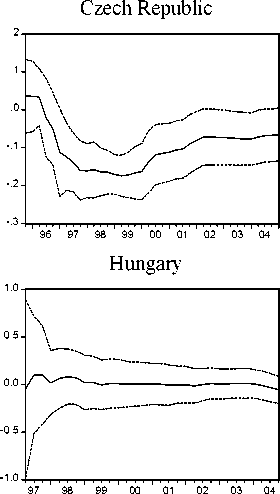
ERM-II
Estonia
EMU-3
Austria
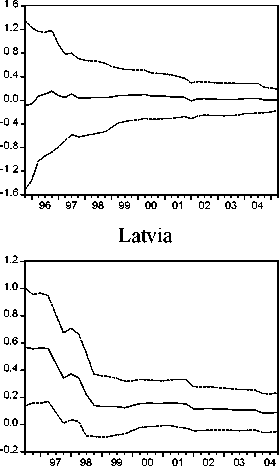
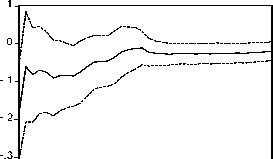
-.4*....................................
96 97 98 99 00 01 02 03 04
Greece
1.0
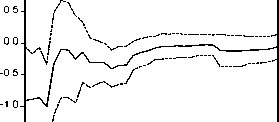
-1.5-
-2.0-1..................................
96 97 98 99 00 01 02 03 04
Poland Lithuania Portugal
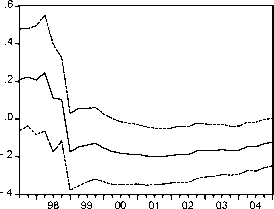
.3
-.1-
-.2-
-.3.
.1 -
.0-
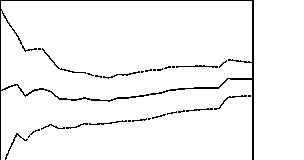

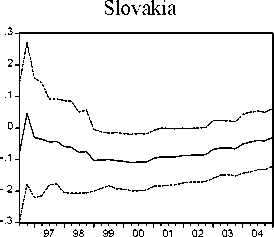
-.4-/
-.5-l..............................
97 98 99 00 01 02 03 04
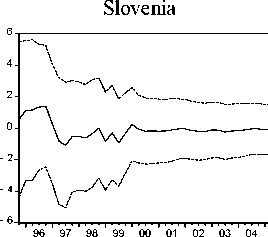
Note: Kalman filter estimates of C2,t in eq. (4). Two standard error bands are plotted.
Negative and significant values of C2,t mean wage flexibility.
9 Belke and Setzer (2004) find that exchange rate volatility has a significant negative impact on employment
growth in Central and Eastern European countries, thus contributing to growth in unemployment. In what
follows, euro adoption, by eliminating exchange rate risk, can be viewed as a sort of active labor market policy, a
substitute for the removal of employment protection legislation.
More intriguing information
1. Implementation of Rule Based Algorithm for Sandhi-Vicheda Of Compound Hindi Words2. Fiscal Sustainability Across Government Tiers
3. Wirkung einer Feiertagsbereinigung des Länderfinanzausgleichs: eine empirische Analyse des deutschen Finanzausgleichs
4. The name is absent
5. Strengthening civil society from the outside? Donor driven consultation and participation processes in Poverty Reduction Strategies (PRSP): the Bolivian case
6. From music student to professional: the process of transition
7. HOW WILL PRODUCTION, MARKETING, AND CONSUMPTION BE COORDINATED? FROM A FARM ORGANIZATION VIEWPOINT
8. An Efficient Circulant MIMO Equalizer for CDMA Downlink: Algorithm and VLSI Architecture
9. Text of a letter
10. The Clustering of Financial Services in London*